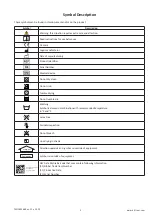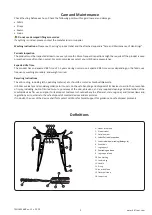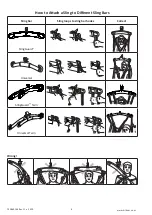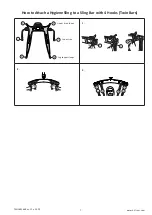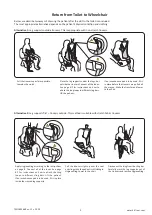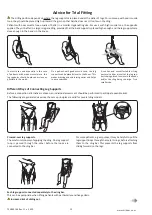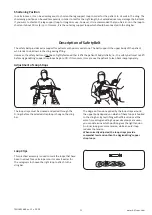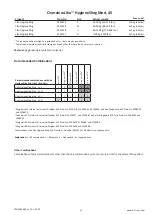
This practical accessory is used to mark the loops that have
been tried out for a certain person. It makes it easier for
the caregivers to choose the right loop to attach to the
sling bar.
Loop Clips
11
www.hillrom.com
7EN160166 Rev. 11 • 2020
Description of SafetyBelt
The loop straps must be crossed and pulled through the
D-rings before the selected strap loop is hung on the sling
bar.
The safety belt provides extra support for patients with poor muscle tone. The belt supports the upper body of the patient
who tends to sink down in the sling during lifting.
However, the safety belt must not be so tightly fastened that it lifts the patient’s body initially; i.e., the safety belt must not lift
before HygieneSling’s upper strap loops begin to lift. If this occurs, it may cause the patient to lean back inappropriately.
The degree of tension applied by the loop straps around
the upper body depends on which of these loops is hooked
to the sling bar. By test lifting with different loops at the
same time as HygieneSling’s upper strap loops are used,
you can determine which position gives the right tension.
An inner loop gives more tension, while an outer loop
reduces the tension.
When correctly adjusted, the loop straps provide
somewhat less tension than the HygieneSling’s upper
strap loops.
Adjustment of Loop Straps
Shortening Position
In certain cases, it can be advantageous to shorten the leg support loop in order for the patient to sit well in the sling. The
shortening position can be used temporarily in order to test for the right length, but extended use may damage the bartacks.
If you want to shorten the leg support loop for long-term use, however, it is recommended that you tie a knot in the loop to
shorten it about 10 cm (4 in). In this case, it is the outer leg support loop which should be connected to the sling bar.



